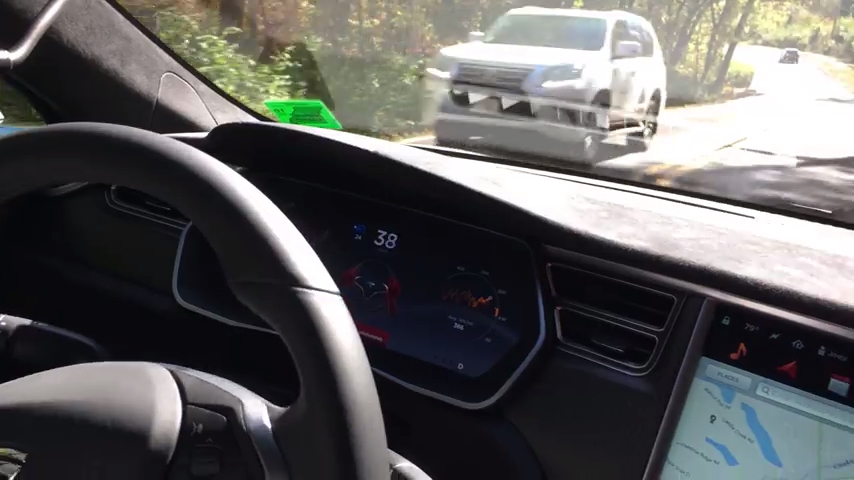Tesla’s autopilot suffers technical glitches both on and off road
10/22/2015 / By Greg White

In an age of autonomous vehicles, no one is safe. Tesla recently debuted their autopilot software, and the system is already experiencing hiccups.
Their are a swath of sensors both inside and outside the vehicle, which regulate the car’s speed and distance from other cares and even enables it to switch lanes.
Despite this impressive technology, drivers who keep their hands off the wheel may veer off their intended course, as illustrated in two recent YouTube videos.
The legality of self-driving vehicles
The videos raise all sorts legal issues about auto-piloted vehicles. In New York, for instance, drivers are required by law to keep at least one hand on the steering wheel at all times.
“I admit I started to ignore the warning to keep my hands on the wheel so that I could record the moment to share with friends,” YouTube user RockStarTree wrote. “That’s when all hell broke loose. My car was tracking the car in front of me to successfully steer, but I was going slower and that car eventually drifted far ahead of me.”(1)
RockStarTree went on to note that, if he hadn’t quickly jerked the steering wheel in the opposite direction, “a devastating head-on collision would have occurred.”(1)
Another driver found that the car nearly swerved off the roadway when the white lines were not painted on both sides of the vehicle.(2)
Tesla CEO Elon Musk has warned that the autopilot functionality is still in its preliminary stages and that “hands-off” driving is discouraged.
Whenever conditions make it difficult to navigate, an audio alert will sound. If that is ignored by the driver, the vehicle will come to a stop, according to Tesla.
Tesla makes no qualms that it is the driver, rather than the autopilot vehicle, that is responsible for a car crash. The vehicle’s instructions read, “autosteer is a hands-on feature. You must keep your hands on the steering wheel at all times.” Drivers should be actively in control of the vehicle at all times, which seems to undermine the point of a self-driving car.(1)
Although the reliability of autopilot vehicles has been called into question, approximately 97 percent of customers are satisfied with their cars. Many reliability issues are covered under Tesla’s four-year or 50,000 mile warranty, including an eight-year unlimited-mile battery and drive chain warranty that covers most issues at no cost.(2)
Self-driving cars have a long road ahead
Tesla is expected to debut its Model X SUV this month, which is at the forefront of self-driving cars. Musk predicts that, in three years, cars will be able to drive passengers from home to work without the driver ever needing to touch the steering wheel. Nevertheless, regulatory approval will likely take years.(2)
Regulators need conclusive data which demonstrate that autopilot vehicles are safe and effective. Self-driving cars are illegal in most states, and only 14 states have considered legislation to regulate self-driving cars. Among those 14 states, 9 have failed to pass bills which legalize the vehicles.(2)
California, Nevada, Michigan, Florida and Washington have rules which dictate how these vehicles can be tested. It may be easier to legalize self-driving cars in these states.(2)
If the self-driving cars are deemed unsafe, they could still be used for off-roading and free-roaming the country.
With videos like these spreading like wildfire on YouTube, however, self-driving cars may be facing an uphill battle both on and off the road.
Sources include:
(1) DailyMail.co.uk
(2) TheGuardian.com
Tagged Under: autopilot vehicles, driverless cars, self-driving cars, tesla, traffic safety


















